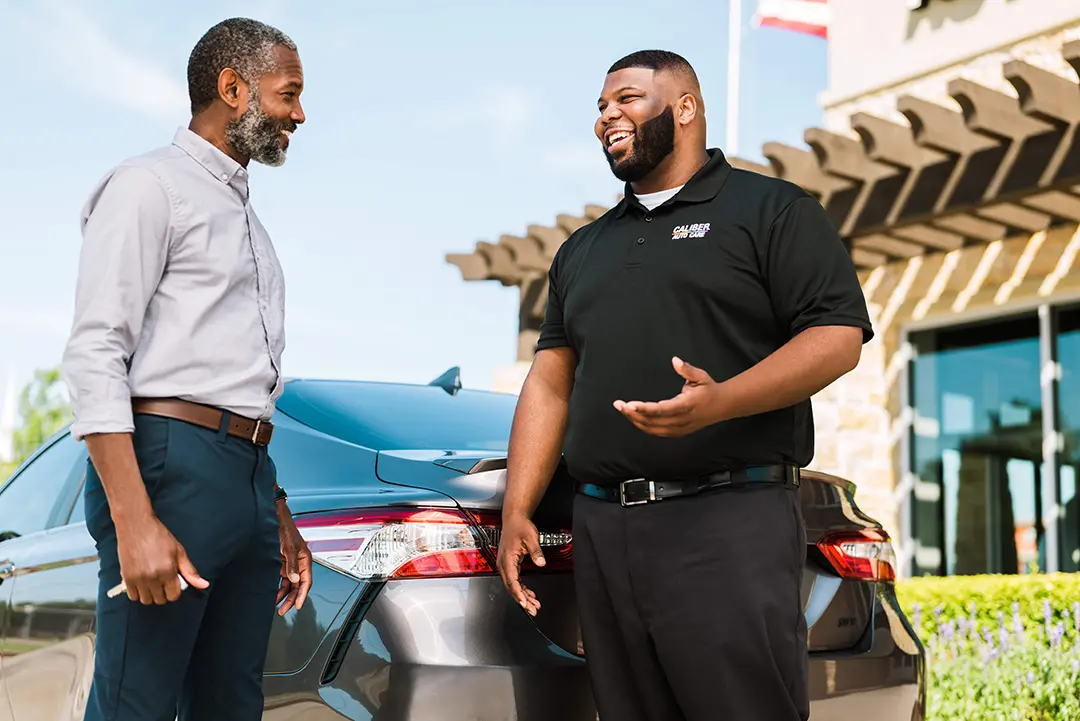Jump Starting Your Car
Let's face it — dealing with a dead car battery can be frustrating if you're not a car enthusiast. However, not knowing what to do next can be even more frustrating. Keeping a quality pair of jumper cables in your vehicle is the difference between a five-minute inconvenience or an hour-long wait for the tow truck to pick you up on the side of the road. It may surprise you to know there are two types of jumper cables: basic jumper cables and portable electric automatic jump-starters.
Basic Jumper Cables
For basic jumper cables, you’ll need a friend or good Samaritan with a vehicle to help jump-start your car. A reasonable minimum length for jumper cables is 12 feet. However, longer versions are available if you can’t park within 12 feet of another vehicle. With any jumper cables you buy, make sure the clamps are solid and the teeth look like they won’t easily slip off battery terminals.
Don't be fooled by brands that label their cables "heavy-duty" — this doesn’t ensure the cable's quality. The most important aspect of basic jumper cables is the gauge of the cable. Higher gauge cables (e.g., 10-gauge cables) won’t give you a strong enough charge to have your battery up and running. On the other hand, a 6-gauge cable should provide plenty of kick to jump-start your vehicle quickly. The lower the gauge number, the faster your car will charge.
Portable Electric Jumper Cables
For portable electric jumper cables, all you need is two hands and a good understanding of your portable device. Size matters when shopping for a portable jumper cable. Older models are much heavier and not as easy to store due to their robust shape, whereas newer models are a sleeker design. Lithium-ion batteries are becoming more popular since the devices are hand-held and come with carrying cases.
The jump-starting power in portable devices is described as CCA, or cold cranking amps (PA for peak amps). CCA is determined by putting a new, fully charged battery in a cold environment (0 degrees Fahrenheit) and measuring how many amps it discharges for 30 seconds. The higher the CCA, the more powerful the jump-starter, but this doesn't mean you should buy the highest CCA jump-starter available.
Smaller or more compact cars can be jump-started by as few as 150 CCA, while trucks and SUVs need around 450 CCA. Your vehicle's age is also a factor to consider when shopping for portable jump-starters, as older vehicles require more juice than brand new vehicles. However, as a general rule, 400-500 CCA should start most any passenger vehicle on the road.
Lastly, since you’re dealing with electricity, safety should always be top of mind. Most portable jump-starters have safety protections built-in, but always check the list of safety features it offers. Here is a list of protections you should be aware of:
- Short Circuit Protection – prevents high current from passing from positive to negative clamps when accidentally touched together
- Over-Current Protection – prevents damage to the jump-starter by keeping it from supplying more current than its peak limit
- Overload Protection – keeps the jump pack from receiving more current than the manufacturer's specifications when being charged
- Over-Voltage Protection – keeps the jump pack from receiving more voltage than the manufacturer's specifications when being charged
- Overcharge Protection – when the jump-starter's batteries are charged, this will "float" charge the unit and keep the excess voltage from being applied to the cells
Jump-starting Your Vehicle
Jump-starting a car isn't difficult, but always proceed with caution. The battery is located in the engine compartment where flammable gases may be present, and a spark could set off a fire. You must connect the right cables to the correct terminals to minimize the chance of sparks.
Basic Jumper Cable Steps
-
- Open the hood of your car and locate your battery and its terminals. The battery is not visible in some vehicles and has remote positive (+) and negative (-) posts provided for jump-starting instead.
- You’ll need to locate the battery on your vehicle and the booster vehicle. You’ll also have to park the booster vehicle close enough to yours to make sure the cables reach both battery terminals. Turn off the booster vehicle and make sure the transmission is in park.
- Clamp the positive (red) jumper cable ends to the dead battery's positive battery terminal. Be sure the clamp is on the battery terminal to provide a strong electrical connection. Before moving to the other car to make connections, ensure the matching negative (black) cable clamp isn’t touching any metal surfaces.
- Clamp the other end of the positive jumper cable to the positive battery terminal in the booster car. Before you connect to the terminal, make sure you see a positive sign next to the battery terminal. Next, connect the negative cable end to the negative battery terminal in the booster car. Once the negative cable is connected to the battery terminal, you can attach the other end to an unpainted metal surface on the car's engine with the dead battery.
- Once all the connections are made, crank the booster vehicle and let it idle for several minutes. If the dead battery is new and was drained by the car lights being left on for an extended period, it will probably start quickly. If it is an old battery or if the car sat without starting for more than a month, it may take longer for the battery to charge and start.
- Try to start the vehicle with the dead battery. If the vehicle cranks, let both vehicles idle for another 2-3 minutes. If the motor doesn’t turn over, you may need to search for other problems.
- Once the jump-started vehicle is running smoothly, you can disconnect the cables in the order opposite of how you connected. Take off the negative (black) clamps first, then the positive (red) clamps off last. Do not let any of the clamps touch or come in contact with metal during this process. Make sure to drive the jump-started vehicle for at least 20 minutes so the alternator can recharge the battery.
Portable Jumper Cable Steps
- Wear protective clothing and eye protection.
- Open the hood of your car and locate your battery and its terminals. In some vehicles, the battery is not visible, and they have remote positive (+) and negative (-) posts provided for jump-starting instead.
- Ensure the positive cable attaches to the positive terminal while the negative cable goes on the negative terminal. Make sure your portable device is turned off while doing this.
- Turn on the device and then try to crank your vehicle's engine. If your vehicle does not crank immediately, wait 2-3 minutes to try again. If the vehicle does not crank this time, you may need to check your vehicle for other problems.
- Once the jump-started vehicle is running smoothly, you can disconnect the cables in the order opposite of how you connected. Take off the negative (black) clamps first, then the positive (red) clamps off last. When removing the clamps, be sure they do not touch each other or any metal. Make sure to drive the jump-started vehicle for at least 20 minutes so the alternator can recharge the battery.
If you follow these steps and digest this information, you should be able to get yourself out of a pickle in no time. If you find yourself unprepared, know that Caliber Auto Care is here and ready to start Restoring the Rhythm of Your Life®.
Find a Caliber Auto Care location
Caliber Auto Care takes the place of your dealership’s service department and your local quick oil and mechanical repair shop with efficient, high-quality auto repair or maintenance services at an affordable price.
We know that scheduling car care services between work, school and play can be a hassle. That’s why we make it as easy and straightforward as possible, offering you neighborhood convenience, superior service, comfortable waiting areas or free local shuttle service and the option of staying in your vehicle for some services while we work. It’s all about meeting your needs and standing behind our work.
How can we help? Let’s get you back on the road
Schedule an appointment
Find a time that works best for you and we’ll start Restoring the Rhythm of your Life.
Get an estimate
Tell us about you and your vehicle to get a free initial repair estimate.
Contact Us
If there’s something specific you need help with, let us know.


